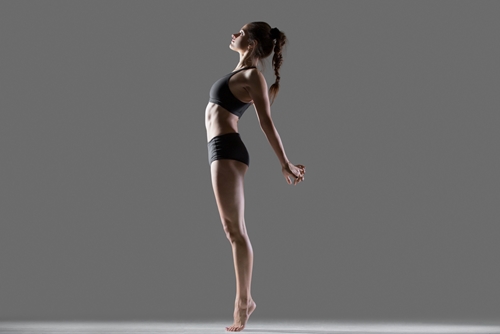Dancers get injured from time to time. It might be due to an overly rigorous practice schedule, an accidental fall, a nutritional deficit, or some other reason. However, when it does happen, it can be immensely frustrating and poorly timed. Dancers may have a big performance in a few weeks or may be looking to audition for a prestigious dance group. Whatever the event is, dance injuries aren’t fun. Consider these five common dance injuries and how to avoid them.
1. Lumbosacral Injuries
If you aren’t a dancer, you might think dancers most commonly experience injuries involving the ankles, hips and knees. While those areas are commonly affected by dance, the spine is also affected. Most often, dancers deal with lower back issues from the amount of movement they do during practice and performances. According to the Centers for Orthopaedics, most spine injuries for dancers are lumbosacral and involve intense pain. This injury can be caused by poor stability, uneven leg length, bad technique, scoliosis and even high heels. According to Dance Teacher magazine, some dancers may have lordosis, which can cause muscle spasms that make them more vulnerable to spine injuries. Following proper dancing techniques, stretching, and building core, pelvic and hip strength can help dancers avoid this common injury.
2. Snapping Hip Injuries
This injury sounds just like its name. Dancers will hear, and feel, a loud popping noise in their hip as they dance. This snap is the illiotibial band shifting over the upper leg bone and snapping. It can be incredibly painful, but there are usually a few warning signs. Most commonly, this happens when the IT band is too tight and hasn’t been stretched or warmed up properly. It can also be caused by weak muscles on the outside of the hips and lordosis. Dancers can prevent this these dance injuries by toning and strengthening all of the pelvic stabilizers, such as the hip flexors, abductors and and adductors, as well as working on the lower abdominal muscles and the core.
3. Achilles Tendonitis
Some people forget about the Achilles tendon and its importance on the body. It’s the longest tendon and connects your calf muscles to your heel bone. Dancers tend to overuse this muscle, which leads to tendonitis. Usually this injury occurs if dancers experience frequent shin splints or lower their arches during warm ups, such as barre exercises. Overtraining, dancing on a hard floor and lack of stretching can also lead to this injury, which can be immensely painful and debilitating when it occurs.
4. Neck Strain
Many dancers forget about the stress they can put on their necks when they dance. However, a common dancing injury is neck strain, especially for dancers who do a lot of varied choreography. Dancers can prevent from straining their neck by lengthening it and elongating the spine when they move, instead of collapsing it.
5. Rotator Cuff Injuries
Most dances involve plenty of arm movement. If dancers continuously use their arms during practices and performances, they may end up with an overuse rotator cuff injury. This overuse can cause tendons to strain and tear, leading to intense pressure in the shoulders. Teachers should discuss proper form with students as well as the mechanics of movement. If a dancer is able to understand where the scapula is, he or she is less likely to point an arm in that direction.
As with any injury or health issue, please consult your physician. These tips are meant to be informational only, and should never replace the advice of a licensed medical practitioner.



